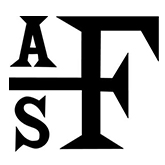Thinking about Muskellunge at a Lakescape Scale
Nearly all fisheries scientists think about spawning habitat, but too often we think about it only in terms of presence of the correct substrate. Joel Nohner and Jim Diana thought about it differently and used a GIS-based model to predict spawning site selection by Muskellunge Esox masquinongy in northern Wisconsin lakes. There, Muskellunge are popular and support trophy fisheries on many inland lakes, but managers are troubled by poor recruitment associated temporally with shoreline development. The trend has raised many questions about availability of spawning habitat and how it might be conserved. Nohner and Diana found that Muskellunge spawning site selection was complex and governed by larger-scale habitat features, such as shelter from fetch, shoreline direction, and local bathymetry, with east or west facing sheltered shorelines with moderate slopes being favored. Local conditions mattered, but spawning was influenced strongly by larger-scale factors. The resulting model predicted spawning site locations in novel lakes, and generates maps that can be used in communicating with the public. But most importantly, it helps managers focus conservation efforts on the specific areas within lakes that are the most important for recruitment.
See original article here:
Nohner, J.K. and Diana, J.S., 2015. Muskellunge spawning site selection in northern Wisconsin lakes and a GIS-based predictive habitat model. North American Journal of Fisheries Management, 35(1), pp.141-157. dx.doi.org/10.1080/02755947.2014.977471
[Taylor & Francis], [Google Scholar]




